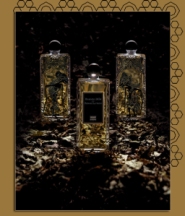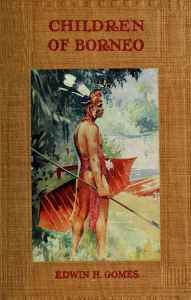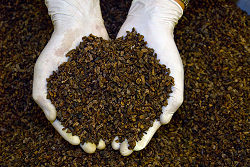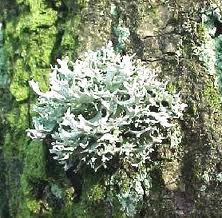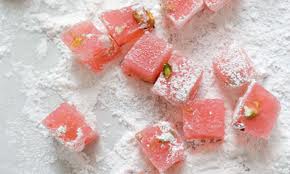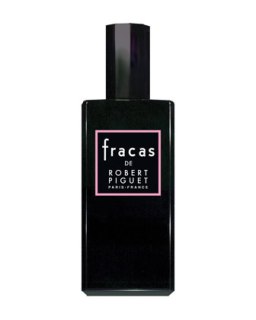A fire fanned by the wind, a desert in flames.
As if bursting from the earth, Chergui, a desert wind, creates an effect that involves suction more than blowing, carrying plants, insects and twigs along in an inescapable ascent. Its full, persistent gusts crystallize shrubs, bushes and berries, which proceed to scorch, shrivel up and pay a final ransom in saps, resins and juices. Night falls on a still-smoldering memory, making way for the fragrant, ambery and candied aromas by the alchemist that is Chergui.
That is how Serge Lutens describes Chergui, a perfume for men and women created  with Lutens’ favorite perfumer, Christopher Sheldrake. It was released in 2001 as a fragrance exclusive to Lutens’ Paris Palais Royal salon and was not available for export. In 2005, however, it was made available worldwide and became a monster hit.
with Lutens’ favorite perfumer, Christopher Sheldrake. It was released in 2001 as a fragrance exclusive to Lutens’ Paris Palais Royal salon and was not available for export. In 2005, however, it was made available worldwide and became a monster hit.
In fact, in 2007, MakeupAlley apparently voted Chergui its #1 favorite perfume. It took that place above: Frederic Malle’s Musc Ravageur (#2), Hermès’ Ambre Narguilé (#3), Guerlain‘s Mitsouko (#8), Andy Tauer‘s L’Air du Desert Marocain (#10), Chanel No. 19 (#11), Chanel Bois de Iles (#12), Guerlain‘s Shalimar (#14), Chanel‘s Coco (#15), Guerlain‘s L’Heure Bleue (#19) and many other, much-loved fragrances. I don’t think I would vote Chergui my favorite scent, let alone of all time (vintage Opium will always have that spot), but I adore Chergui. It is absolutely lovely, and my favorite out of the seven Lutens perfumes that I’ve tried thus far. Until Chergui, I found myself admiring a Lutens fragrance more on an intellectual or theoretical basis, rather than an emotional one. I couldn’t find one that I would actually want to wear. Until now.
Fragrantica classifies Chergui as an “oriental spicy” and lists its notes as:
tobacco leaf, honey, iris, sandalwood, amber, musk, incense, rose and hay.
Chergui opens on me slightly differently than on others. There is an initial citric and lemon note that I haven’t read of others experiencing. The citrus accompanies a strong rose note along with smoky tobacco leaves over a leather base. The combination of notes reminds me a tiny bit of my much-loved vintage Montana by Claude Montana (now renamed Montana Parfum de Peau) as well as the opening of some chypre fragrances — so much so that, for a minute or two, I wonder if perhaps I received a different sample as part of my Lutens set. But, no, this is definitely Chergui. The tobacco leaves are unmistakable. This is not the tobacco of a cigarette or dirty ashtray, nor is it the fruity tobacco of a pipe. These leaves recall images I’ve seen of tobacco drying under the hot sun of the American South. They have a rich amberous, almost nutty element to them with smoke that goes far beyond the sort in mere incense; it verges into the more extreme, black, tarry aspects of frankincense.
At the same time, the opening exudes honey. It is not as strong on me, at this time, as it seems to be on others. In fact, I seem to have the reverse experience of a number of commentators who start out with honey, hay and tobacco, only to find a heart of spicy rose later on. On me, the pyramid triangle is reversed. The rose is upfront and on top, with smoke and woody notes following on its heels.
There is also a note of camphor which intertwines itself with the smoke. It’s almost a medicinal note which leads me to wonder if camphor is Christopher Sheldrake’s favorite ingredient for perfumes. The slightly chilled, cold, cool note it provides is interesting, particularly when combined with the rose notes, because it creates a strong similarity to the many rose oud fragrances currently on the market. In fact, I can definitely smell a woody, medicinal, floral oud note in Chergui, though no oud or agarwood is listed. (Then again, I continuously read that Serge Lutens doesn’t list all the ingredients in his perfumes, so who knows.) The note is subtle and not very strong, but it dances around the rose and honey opening, adding dryness and wood to the perfume’s richness.
The camphorous smoke accords strongly call to mind campfires, except you’re not in a forest as you are with oud perfumes. Here, the campfire is in a field of roses sandwiched between a Turkish tobacco bazaar and an ancient Greek Orthodox church that is billowing out incense and frankincense. Unlike so many others, I don’t get impressions of Morocco or the desert from Chergui. I definitely did from Andy Tauer’s L’Air du Desert Marocain, but not from this. On me, it was not spiced enough for Morocco. Instead, for some strange reason, I get persistent images of Istanbul. But all that is mere quibbling because, frankly, I cannot stop sniffing my arm!
that is billowing out incense and frankincense. Unlike so many others, I don’t get impressions of Morocco or the desert from Chergui. I definitely did from Andy Tauer’s L’Air du Desert Marocain, but not from this. On me, it was not spiced enough for Morocco. Instead, for some strange reason, I get persistent images of Istanbul. But all that is mere quibbling because, frankly, I cannot stop sniffing my arm!
As time passes in the opening hour, the leather starts to bloom, alongside subtle hints of sandalwood. This is not the cold, black leather of scents like Robert Piguet’s Bandit or Montale’s Aoud Cuir d’Arabie; nor is it the pale suede of Chanel’s Cuir de Russie or Etat Libre d’Orange’s Tom of Finland. This is warm, soft leather that is caramel, nutty and smooth. The accompanying sandalwood is faint, but never synthetic. And the whole thing is cocooned in a backdrop of rich honey. There is great sweetness, but it is never cloying or like the sugar bomb perfumes that are currently saturating the commercial market. This is not diabetes in a bottle; there are no cupcake or dessert similarities here.
Thirty minutes in, the camphorous notes have receded a little, as have the woody oud-like notes. The sandalwood increases its presence, as does the element of sweet hay from what is said to be a healthy dollop of coumarin. (See the Glossary for further details on coumarin and its notes.) To be honest, I really don’t get a hell of a lot of sweet hay at this point but, then again, my perfume triangle seems to be reversed. The strong coumarin accord comes later, about four hours into the fragrance, and its straw-like sweetness is a perfect counterbalance to the different, richer kind of sweetness coming from the honey.
The smoke, sandalwood and florals call to mind several different perfumes. Again, L’Air du Desert Marocain is not one of them. There is, however, a surprising and peculiar impression of YSL‘s Opium made light — a comparison also noted by the blog, That Smell. To some extent, that’s not surprising as Opium is the ultimate benchmark for all spicy orientals with incense and frankincense. But Chergui is much lighter and sweeter than (vintage) Opium with its powerful eugenol cloves, its opening blast of citrus and orange, and its muscular sandalwood, opoponax and balsams. I haven’t tried (yet) Tom Ford’s Tobacco Vanille which some say is similar to Chergui, but what I think it sometimes resembles is Molinard‘s  amazing Habanita, one of the original sweet tobacco and leather fragrances which dates back to 1921. Chergui lacks its very strong citric opening and its constant, very powdered vanilla character, but there are similarities especially with the rose, leather and sweet tobacco accords of the opening hours. Chergui is more honeyed tobacco leaves, while Habanita is more powdered tobacco paper, but there are similarities.
amazing Habanita, one of the original sweet tobacco and leather fragrances which dates back to 1921. Chergui lacks its very strong citric opening and its constant, very powdered vanilla character, but there are similarities especially with the rose, leather and sweet tobacco accords of the opening hours. Chergui is more honeyed tobacco leaves, while Habanita is more powdered tobacco paper, but there are similarities.
As time passes, Chergui continues to develop. At the two hour note, the tobacco has become softer, the incense milder, the sandalwood smoother and the whole thing takes on a creamy aura. I have a definite impression of creamy tea due to a milky note that is lovely and cozy. And the honey accord is getting stronger now that the powerful incense and wood accords have retreated. The leather is very faint, if it’s there at all. Interestingly, I’ve read a surprisingly large number of comments that say the leather seems stronger on men than on women, with these reports coming from women whose husbands or boyfriends also wear Chergui.
After 4.5 hours, Chergui is all honey with some soft tobacco and loads of sweet, dry coumarin. It really smells like bales of hay in a barn, only coated with honey! Those notes constitute the essence of the dry-down phase for me and they remained for several more hours to come.
In terms of sillage and longevity, Chergui became close to the skin after about four hours, but its longevity is impressive. I could smell faint, minute traces of it on my skin after 8 hours and, again, my body consumes perfume voraciously. On others, I’ve read it lasts forever and ever. Also, as a side note, I’ve read a lot of people say that this is a perfume that can actually improve in the heat and in summer, so it should not be considered solely as a winter perfume.
Chergui has many admirers, but some detractors as well. On Basenotes, it has 102 positive reviews, 13 negative ones and 28 neutrals. The 13 negative comments focus on how it is either cloyingly sweet or uninteresting. On Fragrantica, the negative reviews are greater in number with the primary complaints being: 1) it smells too powdery; 2) it’s too sweet or too “old man”-ish; and 3) it opens like “bug spray.” I don’t smell any powder in Chergui and, given how I’m not a huge fan of the note, I would mention it if I did. I can see, however, why some may get the impression of “bug spray.” I think it’s the camphorous element in the opening. According to Luca Turin, in the old days, camphor notes (like that in patchouli) were used as bug repellent. The more common criticism of Chergui — that of its sweetness — is something I don’t personally agree with given the extent of the very dry smoke, incense and coumarin, but I can see how this would be far too much for someone who isn’t into honey perfumes or who generally prefers light, floral, or less heady scents. This is definitely not the scent for them!
Among the many rave reviews for Chergui, a few stood out to me. One was the absolutely beautiful review by Victoria from Bois de Jasmin who wrote:
it is an Arabian Nights vignette in a liquid form.
The candied quality melts in the smoke whispers that fill the arrangement, like incense smoke seeping through the carved screens. The floral accord folded into the smoky layers of Chergui lightens density and sweetness, lending a voluptuous silky quality. The fine cured Virginia tobacco notes overlaid on the smoky leathery base give the composition a slightly masculine character, counterbalancing the sweet notes….
If Chergui is an oasis, it encompasses not only the romantic elements of such a vision—dark black tea served with sugar cubes on the side, narghileh smoked inside leather tents, heavy silks carried by the caravans. The camels resting in the shade are suggested by the animalic sweetness underpinning the honeyed base. Like in an intricate Persian miniature, Chergui is a tale that spills from one story into another.
It maintains the suspense despite the fact that the development of the composition from the top accord to the bottom is not particularly dramatic. Instead, the hints of what is to come—whiff of tobacco, curl of rose petal, creaminess of sandalwood—are suggested in the preceding stages, resulting in the harmony of the narrative. At the same time, the intrinsic romanticism of Chergui fits with the philosophy of Serge Lutens’s work. Like Delacroix, a French painter, was fascinated with the Moroccan scenes, Serge Lutens’s fragrances allow a glimpse into another world through the eyes of an outsider.
I think that may be one of the most beautiful reviews I’ve read for any fragrance! But an equally noteworthy one — albeit less romantic and much more amusing — came from a commentator on MakeupAlley. There, “ThreeJane” gave a wonderful, very down-to-earth review of how Chergui can make one average, harried, stressed-out woman feel:
Chergui is a WOMAN’S scent. You’d better be a mature woman…all curves, breasts, buttocks, and satiny toffee-colored skin to wear this. You can pin a man from across the room with your smoky eyes, beckon him with a narcotic-laced toss of your hair, bend his will to your whim, and break his heart with an indifferent glance. Your clothes meld to your curves, and men can’t say why you are so intoxicating… […]. Women want to be you, men want to possess you.
That’s how this scent makes me feel, anyway. Not like a harried housewife with four homechooled kids and a messy (not dirty! Just cluttered!) house that has dogs bouncing off the walls and a perennial dish or three in the sink. Some days I just drag around in yoga pants and a t-shirt (it’s really a pajama tee from Target, don’t tell) with my hair haphazardly twisted up in a bun. I’m 41, with some wrinkles and sagging skin, standard mom issue.
But when I wear Chergui, I magically transform into Catherine Zeta-Jones in “The Legend of Zorro”, Angelina Jolie in “Original Sin”. Lush, luscious, sensual, unforgettable. After you get past the first almost acrid, medicinal blast of herby incense (about 10 minutes)…almost eyewatering, really…the scent melds into a spicy, honeyed, slightly sugary amber that’s saved from cloying-ness by a fresh bite of tobacco, iris, and I guess it’s hay. There’s supposed to be rose notes in this, which unfortunately, rose never shows up on me. But it’s not needed or missed.
Hours, and I mean HOURS, later, the drydown maintains the amber and slowly includes a woody edge…I guess that’s the sandalwood. I can see the guy from “The Most Interesting Man in the World” beer commercials wearing this. But it’s not manly, oh no. If my florid, overblown prose didn’t spell it out above, it’s verrrry feminine (all dependent on chemistry…always).
[…] There aren’t a lot of things that can elevate me from my rather humdrum hausfrau existence, so when I find something that lifts me up, I’ll take it and exploit it every chance I get. Just lovely.
The two reviews could not be more different and, yet, I think they both manage to capture the gist of Chergui. Try it for yourself, and see where the red desert wind takes you….






